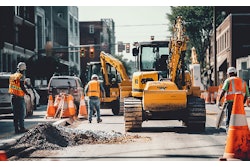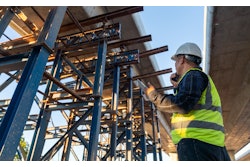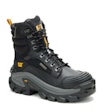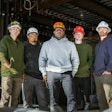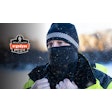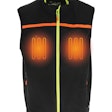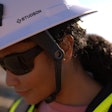
Wearing a work hoodie may provide protection against windy, rainy and cold conditions found on a jobsite. There are many material options from which to choose when it comes to sourcing hoodies. Safety, comfort and durability are the prime factors in choosing the best material for hoodies being worn at work.
Construction workers should consider the specific jobsite needs when making the choice of a material to choose in a work hoodie, including the climate, the type of tasks they will be performing and jobsite safety requirements.
While work hoodies are meant to provide head warmth on the job site, it should not be to the extent that the person wearing it feels overheated. While insulation and thermal properties are important hoodie considerations working in cold weather, breathable materials are an optimal choice.
Choices abound. With cotton/polyester blends, cotton provides breathability and comfort, while polyester provides durability and helps to wick away moisture.
Work Hoodie Materials
Polyester provides many other benefits, as is outlined in this previous IRONPROS story which explains the different types of polyester on the market.
In addition to durability, polyester fabric has strong elasticity and is considered abrasion-resistant. As such, it can withstand wear and tear when working around rough surfaces and equipment. The material is favored for offering breathability and comfort. It is lightweight and wrinkle-resistant. Polyester is highly resilient to heat, light and can withstand exposure to UV lighting. While not generally considered to be fire retardant, polyester is regarded as a fire-resistant material because of its high heat tolerance.
The softness and warmth of fleece – which is typically used as a lining in work hoodies – may be desirable in cold working conditions.
Canvas is a heavy-duty fabric that is tightly woven and crafted from a cotton or cotton/polyester blend. Abrasion-resistant and durable, it may be a suitable fabric for construction workers’ hoodies.
Ripstop fabric is crafted from a special reinforcing technique making it resistant to tearing and ripping. It is durable for work hoodies, especially on jobsites where the worker wearing the hoodie may encounter sharp objects or rough surfaces necessitating puncture- and tear-resistant apparel.
Work Environments and Conditions
For construction workers whose jobs entail working in colder climates, thermal knit hoodies could be an option. The textured, waffle-like material provides extra warmth and insulation.
Other factors that require consideration when wearing a construction hoodie is if a job is conducted in low-light or hazardous conditions. Added safety is derived when wearing high visibility materials with reflective stripes, which often are made of polyester and compliant with ANSI/ISEA safety and visibility standards.
Moisture-wicking fabric such as polyester or specialized blends may be indicated in situations where the demands of the job produce a lot of sweat. These materials can help pull moisture and sweat away from the skin during extended periods of physical activity.
Flame-resistant fabric is indicated in working environments with a risk of exposure to flames or sparks. Such hoodies are made from specially-treated fabrics to provide protection against heat and flames. Those who work on jobsites where chemicals are commonly found should consider hoodie materials that are resistant to such chemicals.
Another option to amplify body warmth is to wear a heated jacket or heated vest with a hood.
Work Safety and Visibility
Those workers who wear hard hats on the job must take several factors into consideration if they are considering wearing a hoodie. A jobsite safety manager should be consulted to determine whether wearing a hoodie under a hard hat for a particular job task would violate any safety standards.
If it is safe to do so, proper fit and adjustment of both the hoodie and hard hat are key factors. The straps and suspension system of the hard hat should be adjusted to accommodate the extra layers of the hoodie and still provide a snug and secure fit to reduce the risk of it getting caught or interfering with its function.
Visibility is key in wearing a hoodie, with or without a hard hat. The hoodie should not obstruct peripheral vision, nor should it restrict head movement or create possible hazards. Consider as well that a hoodie may impair the ability to hear sounds clearly. Clear visibility and hearing should be taken into consideration when choosing materials for hoodies.

